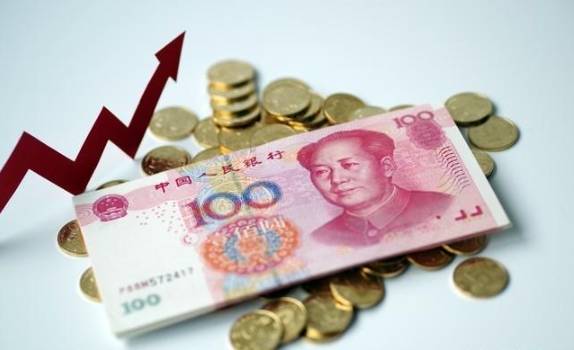Chinese Assets Surge, Yuan Breaks 7
To address anticipated instability, policy measures must exceed expectations in order to achieve better results. Following the introduction of many policies that exceeded expectations, the A-share market has risen, and so has the Chinese yuan exchange rate.
On September 25th, the offshore yuan's spot exchange rate against the US dollar reached 6.9942, briefly breaking through the 7 mark. After a significant increase yesterday, the A-share market continued to rise today.
From a global perspective, the surge in Chinese assets coincides with several important turning points in the global economic and financial landscape.
In terms of monetary policy, major economies have entered a cycle of interest rate cuts. Particularly, the Federal Reserve's announcement in September of a substantial 50 basis point interest rate cut signifies a gradual convergence of the divergence trend in monetary policies between China and other countries, providing some relief to the phenomenon of the inversion of the China-US interest rate spread.
Wang Youxin, a senior researcher at the Bank of China Research Institute, told Sanlihe in an interview that subsequent statements by Federal Reserve officials also revealed the possibility of an additional 50 basis point interest rate cut within the year, and potentially another 100 basis point cut next year. The weakening momentum of the US dollar appreciation has provided external environmental support for the stability of the Chinese yuan exchange rate.
Advertisement
From the perspective of economic fundamentals, the pressure on US economic growth is increasing, and the Eurozone economy remains in a state of sluggish recovery. With a series of favorable policies taking effect, market expectations are that China's economic growth rate will improve before the end of the year, which is conducive to enhancing the international appeal of Chinese yuan assets.
Wang Youxin believes that since the beginning of this year, China's foreign trade has been strong, with a consistent high trade surplus, effectively enhancing the supply capacity of the foreign exchange market and laying a solid foundation for the stability of the Chinese yuan exchange rate. Currently, financial markets are showing signs of bottoming out and rebounding, attracting some cross-border funds to increase their allocation of Chinese yuan assets.
From a domestic policy perspective, the People's Bank of China launched a "four-pronged" approach on the 24th, which greatly boosted market confidence. The introduction of these policies was not a gradual process but a comprehensive and systematic rollout with significant force and novelty.
This novelty is reflected in the creation of two structural monetary policy tools: one is the swap facility for securities, funds, and insurance companies, and the other is a special re-lending facility for stock buybacks and increases in holdings.
The initial phase of the swap facility for securities, funds, and insurance companies is 500 billion yuan, and it can only be used for the stock market; the initial quota for the special re-lending facility for stock buybacks and increases in holdings is 300 billion yuan. Moreover, if these two tools are used effectively, there will be a second and third phase, which sends a strong signal to the market: there is ample ammunition, so have no worries!In response to this, many media outlets have used the term "king's bomb" to describe the situation. Sanlihe believes that in addition to the "four arrows fired simultaneously," there are still reserve tools in the policy toolbox.
In the constantly changing global economic cycle, facing the alternation of US dollar interest rate hikes and cuts, China has strategic composure and also responds in a timely manner. Although it is not to be expected that one can sail through the wind and waves in one fell swoop, the resilience and vitality of China's economy are the greatest "dampers."
Do not underestimate China's determination to stabilize the economy, nor should you belittle China's ability to do so. A strong combination of policies will help support the real economy, promote consumer spending among residents, and boost market confidence. The trend of economic recovery and improvement will be further consolidated and strengthened.

In terms of economic growth fundamentals, monetary policy adjustments, and cross-border capital flows, these factors will continue to play a role, providing strong support for the further strengthening of the RMB exchange rate.
Leave A Comment